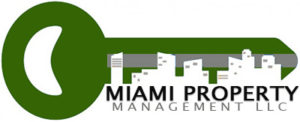Which items should you include in your lease agreement?
Are you just getting started with building your portfolio of investment properties? If so, you’ve come to the right place! In this article we will share with you several things that you should include in your lease agreement.
1. Names of all residents and occupants.
Every adult (person over 18 years old) who lives in the rental—including both members of a married or unmarried couple—should be named as residents and sign the lease or rental agreement. Each resident is legally responsible for paying the full amount of rent and following all other terms of the lease or rental agreement.

This means that if one resident skips out and fails to pay rent, you can legally seek the entire rent from any of the residents. Then, if a resident moves in an unapproved roommate or sublets the unit without your permission, you have the right to terminate the tenancy and evict all residents, if necessary.
2. Contact information.
Consider requiring residents to contact you in writing about certain matters. Although texts and instant messaging might work for some discussions, you want to be able to keep a reliable—and printable, in the event you ever need to show a judge—record of all communications with your residents.
For example, you might state that residents must request repairs in writing or give notice to terminate the tenancy by sending a letter to a designated address. If you agree to accept email, make sure that you regularly check email and have methods for saving (and backing up) everything you send and receive.
3. Description of rental.
Include the complete address of the property (including building and unit number, if applicable). You’ll also want to note any specific storage areas or parking spots that are included. For example, if the rental includes assigned parking, be sure to write in the stall or spot number. Similarly, specify areas that the residents are not allowed to access (such as a locked shed in the backyard).
4. Term of the tenancy.
Rental agreements create short-term (usually month-to-month) tenancies that renew automatically until the landlord or residents terminate. Leases, on the other hand, create tenancies that terminate after a specific term (usually a year). Whichever you use, be specific: note the start date, the tenancy length, and (if creating a lease) the expiration date.
5. Rent.
Don’t just write in the amount of rent—spell out when (typically, the first of the month) and how it’s to be paid, such as by mail to your office, online, auto-draft, ACH, etc. Make sure you comply with your state’s laws on paying rent. To avoid confusion, spell out details such as:·
- Acceptable payment methods (for example, personal check only)
- Whether you charge a late rent fee, the amount of the fee, and the grace period (if any)
- Any charges if a rent check bounces
6. Repairs and maintenance.
Your best defense against rent-withholding hassles and battles over security deposits is to clearly explain your repair and maintenance policies, including:

- The residents’ responsibility to maintain clean and sanitary premises and to pay for any damage they cause (excluding normal wear and tear)
- A requirement that the residents alert you to defective or dangerous conditions, with specific details on your procedures for handling complaints and repair requests
- Restrictions on resident repairs and alterations (for example, prohibit any painting of the unit unless you approve it in writing)
Related: Rental Property Damage vs. Normal Wear & Tear: How to Tell the Difference
7. Entry to rental property.
To avoid resident claims of illegal entry or violation of privacy rights, your lease or rental agreement should clarify your right to access the rental. It’s okay (if permitted under your state’s landlord access laws) to have different policies for different situations. For example, you might provide 24 hours’ notice before you enter to make repairs or show the unit to potential renters, but you might not be able to provide advance notice in an emergency.
8. Deposits and fees.
Avoid some of the most common disputes and one of the top reasons landlords are involved in a lawsuit between landlords and residents by being very clear about security deposit disposition. (Note: I have added a sample chargeback fee sheet that you might want to have a resident sign to acknowledge the fee amounts that can be expected upon move out.)
- The dollar amount of the security deposit (be sure you comply with any state security deposit limit laws)
- How you might use the deposit (for example, to cover unpaid rent or repair damage the resident causes) and how you won’t use it (for example, you won’t accept it in lieu of last month’s rent)
- Whether you expect the resident to replenish the deposit in the event you have to make a deduction mid-tenancy (for example, if you repair a window the resident’s child throws a ball through two months into the tenancy)
- When and how you will return the deposit and account for deductions after the resident moves out (check your state’s laws on returning security deposits)
- Any nonrefundable fees, such as for cleaning or pets (make sure your state allows nonrefundable fees)

9. Your rules and important policies.
If a rule or regulation is so important to you that you’d want to remove a resident who violated it, be sure to include it. Other not-so-vital rules can be written in a separate rules and regulations document or addendum to have them sign and acknowledge at lease signing. Landlords commonly include the following policies in their leases and rental agreements:
- No illegal activity: To limit your potential liability, as well as help prevent injury to others and your property, you should include an explicit clause prohibiting illegal and disruptive behavior, such as drug dealing, drug use, and excessive noise or nuisance.
- Smoking: You have the right to prohibit or restrict smoking of any kind in your rental. If you don’t allow smoking, you might want to note that the ban includes all forms of smoking—including marijuana or vaping. If you limit smoking, write out where and what residents may smoke.
- Pets: You have the right to restrict or prohibit pets in your rental, with the exception of service and emotional support animals. If your rental is pet-friendly, include your pet policies. Write out how many pets a resident can have, and specify what types, breeds, and sizes of animals you allow. Also, note if pets must be on leash outside the unit or if residents must clean up pet waste in common areas or a yard.
Related: An Emotional Support Peacock—Really?! How to Navigate the Murky Waters of ESAs as a Landlord
10. Other restrictions.
Federal, state, and local laws might require you to disclose certain information in your lease or rental agreement. For example, you might have to inform residents about lead-based paint or the unit’s bed bug history. You’ll also want to make sure your lease or rental agreement doesn’t violate any rent control laws, anti-discrimination laws, or health and safety codes.
Again, I would strongly advise having a local landlord-resident attorney review your lease or rental agreement to ensure it complies with all applicable laws.
Source – Bigger Pockets
Contact Miami Property Management
To learn more about the items that you should include in your lease, or to speak with us about the property management services we can offer you, contact us today by calling 305-428-3904 or click here.











Leave a Reply
Want to join the discussion?Feel free to contribute!